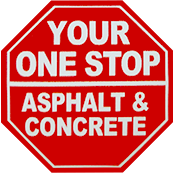What is IRR?
IRR combines hot-mix asphalt with heat and the existing damaged asphalt to create a seamless, longer-lasting surface. If you have potholes, deep or shallow, hire a professional asphalt and sealing company to repair them with IRR. Beyond potholes, IRR can also be utilized for cracks, heaving, or uneven areas.
The IRR Process
First, the affected area will be blown and swept clean. In some cases, rejuvenators are added to restore any oils lost due to oxidation. When all loose particulates are removed, the surface is heated, allowing the absorption of radiation (heat) to aid in the removal of failed aggregate. Next, the affected area will be filled with new or reclaimed material and heated again to ensure the material properly bonds. It is important to note that multiple layers will be heated individually due to the percentages and properties of asphalt. For example, a new black material will absorb heat more so than aged, white material.
Once the pothole has been raked and graded to the proper level, it is compressed with a multi-ton roller or plate. Unlike other methods, IRR does not cause burning, scaling, or separation of aggregate. IRR also allows for deeper asphalt repair and takes less time than traditional methods. Lastly, IRR offers more water resistance to the porous asphalt, aiding in the repulsion of material breakdown.
Why Choose the IRR Method for Pothole Repair
- Less expensive: this method uses fewer materials
- IRR process takes less time
- Offers more water resistance to the material and area affected
- Can be driven on immediately, causing less traffic interruption
- Due to proper bonding, surface has a smoother finish
Contact us today at A1 Professional Asphalt & Sealing, and let us help your business with your asphalt and sealing needs. We strive to go above and beyond bringing our customers the best product and the best methods, including Infrared Road Repair.

